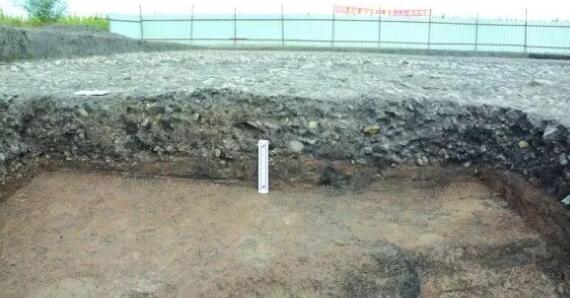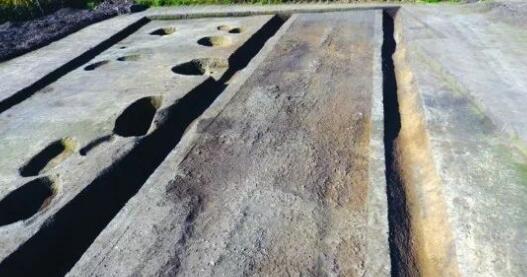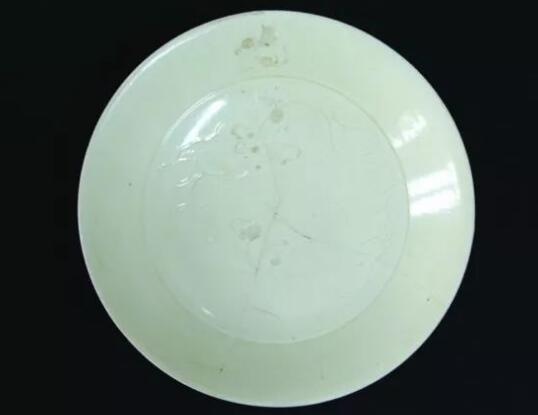Archaeological Pathways and Drainage Ditches Found in Upper Capital of Jin Dynasty
Located in the southern suburb of Acheng District, Harbin City, Heilongjiang Province, Upper Capital Site was the very first capital city built in the Jin Dynasty, as its capital for 38 years. From 2013 to 2017, an archaeological study had been implemented for five consecutive years, with archaeological explorations in districts of imperial area and southern part of the city, and excavations had been conducted in eastern and western part of imperial area, southern walls, western gates, city walls and outer city. From June to November 2018, Heilongjiang Provincial Institute of Cultural Relics and Archaeology carried out an archaeological excavation with an area of 1,255 square meters at the pathway site in the imperial city of the Jin Dynasty to the south of imperial area, which achieved preliminary academic results.

Aerial photo of the excavation area
According to the exploration, it was confirmed that there had been a pathway between the imperial area and the westwall on southern wall of southern city, about 560 meters long totally and 46 meters wide, with drainage ditches built along both sides. The excavation this time was undertaken in the western part of the pathway remain, about 120 meters to the south of the main gate of the imperial palace.
The north-south pathway uncovered was recorded as L1, and to the west of which there was another one perpendicular to each other, lying east-west, was recorded as L2. There were drainage ditches along both sides of the pathways.

Section of the east wall
L1, running north-south, was the main road between the main gate of the imperial city and the western gate of the southern wall of southern city, about 26 to 28 meters wide in the west and 19 meters wide in the north-south part uncovered. Grounds of rutted roads in the northwestern part were found, with ruts about 0.5 to 0.2 meters wide, 1.6 meters distance between and 0.05 to 0.08 meters underneath the road.

Drainage on the south of road remain L2
L2 was an east-west side road to the west of L1 perpendicular to each other and leading to the west wall of Nancheng after exploration. It was 6.3 to 6.9 meters wide in the north-south part and about 38 meters long for excavation in the east-west part. A lot of ash pits of round, oval and irregular shapes with pieces of broken bricks and tiles, ceramic fragments and copper coins inside, were discovered along both sides of L2.

Road remain L2
The pottery and porcelain unearthed were mainly vessels used for daily life, and bricks and tiles that used for constructions, which were all fragments abandoned. The pottery was made of the muddy clay, such as pots and basins. As for the porcelain, there were bowls, trays and plates of white porcelain from Ding Kiln mainly and a few celadon products from Yaozhou Kiln. And the copper coins were of Tang and Northern Song dynasties mainly.

White glazed porcelain
After archaeological exploration and excavation, we could have a rudimentary knowledge that L1 was a central street from the south gate of the imperial city (the main gate of the imperial palace) to west gate of the southern wall in southern city , in line with multiple palace sites inside the palace city. And the corresponding relation among Shangjing Palace-Gate Site-Imperial Street-External Gate Site (Wengcheng) was further confirmed. The excavation this time played an essential role in further comprehension of the Shangjing City’s distribution and timeline of constructions, especially in finding archaeological information about the pathways inside Shangjing City and drainage system constructions. ( Translator: Yuan yuan)

